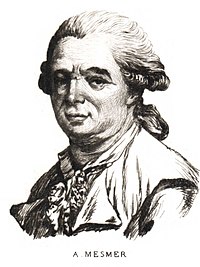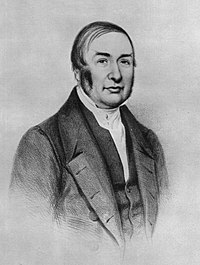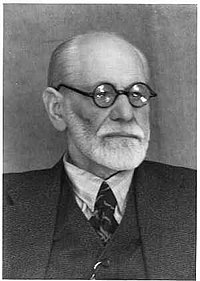Motivation and emotion/Book/2011/Hypnosis
Hypnosis: How effective is hypnosis in changing motivation?
| This page is part of the Motivation and emotion book. See also: Guidelines. |
| Completion status: this resource is considered to be complete. |

What is hypnosis?
[edit | edit source]
Modern hypnotherapy has roots that can be traced to similar practices found in ancient Persian texts, yoga (White, 1941), as well as the work of Franz Anton Mesmer (1734 – 1815) from whom we derive the term mesmerize, and who believed in a fluid universal magnetic force that can influence the health of the human body; a force to become known as animal magnetism (Waterfield, 2003).
Hypnosis is now considered to be a state of cerebral attentiveness or mental concentration that usually leads to a form of progressive relaxation, and is often induced by a procedure known as hypnotic induction (Lynn, Fassler & Knox, 2005). Hypnosis is characterised as a non-deceptive placebo (Kirsch, 1994) with a subject being guided to respond to suggestions for changes in experience, perception, sensation, emotion or thoughts (Kraft & Kraft, 2005).

The earliest definition was given by James Braid (1795-1860) who invented the term hypnosis to mean nervous sleep, as opposed to normal sleep (Braid, 1853). Braid later reserved the term hypnotism for a state of amnesia resembling sleep called a hypnotic state (state-theory), but later took on a more non-state stance. The concept of hypnosis being any form of sleep was later discredited with research showing an unlikely relationship between sleep and hypnosis (Fricker & Butler, 2001).

Two main schools of hypnosis emerged during the late 19th century. These were the Paris School, which argued that hypnosis was an abnormal state of functioning; and the more dominant Nancy School, arguing that hypnotism was simply an extension of normal psychology. Debate between the two schools over Braid’s state theory and the concept of a trance like state during hypnosis continued. Psychotherapists began to postulated that only heightened suggestibility and not any state-like trance could account for the phenomenon of hypnosis (Lynn, Fassler & Knox, 2005). Altered state views are now rejected by most sociocognitive theorists (Lynn & O’Hagen, 2009), however, recent brain imagery and research has reinvigorated debate into the merits of a state-theory hypothesis (Fricker & Butler, 2001).
Hypnosis in therapeutic purposes is known as hypnotherapy, while the term stage hypnosis has been coined in entertainment circles. Self hypnosis is used when describing self induced physical relaxation and focused mental concentration; a practice made widespread since the work of Emile Coue (1857-1926) following his theory of conscious autosuggestion and psychotherapeutic techniques (Waterfield, 2003).
How does hypnotism work?
[edit | edit source]
Victorian era exponents of therapeutic hypnosis such as Braid and Bernheim believed that hypnosis was a form of suggestion that communicated directly with the subject’s conscious mind. It wasn’t until the end of the 19th century when Sigmund Freud (1856-1939) and Pierre Janet (1859-1947) introduced the concepts of the unconscious and subconscious mind into the hypnotic equation, leading to the practice and theory of hypno-analysis and regression hypnotherapy. Several concepts including the ideo-motor and ideo-dynamic theories have been adopted to explain the phenomenon of hypnosis, and employed to help illustrate the power of an idea (or mind over matter) as an explanation for the psycho-physiological impact of hypnosis (Waterfield, 2003). Under hypnosis, the brain constructs a reality according to what is suggested by the hypnotic inductor (Burkhard, 2009).
While research is yet to identify a superior model, hypnotic induction can take a number of forms (Lynn & O’Hagen, 2009). These include Braidism (which utilises an eye-fixation method), as well as Ericksonian techniques devised by the most influential post WWII hypnotherapist, Milton Erickson (1901-1980). Often described as the Dean of Hypnotherapy (Mays, 1990), Erickson employed such tactics as direct and indirect verbal suggestions, metaphorical devices, figures of speech, mental imagery, as well as physical manipulation (Kraft & Kraft, 2005). It has been hypothesised that the use of metaphor in hypnotherapy, which encompasses other forms of word play such as simile and analogy, helps to not only communicate a richness of experiential knowledge, but also bridges the gap from semantic connotation to true understanding, thus enhancing participation (Mays, 1990). Pavlov himself hypothesized that suggestion is one of the most simple forms of human reflexes (Waterfield, 2003).

While modern brain imaging techniques can help illustrate but not necessarily prove theoretical explanations of internal mental processes, recent work has demonstrated that hypnotic induction is accompanied by changes in the brain (Burkhard, 2009). Modern medical imaging technologies have also given greater insights into how the brain functions under hypnosis, indicating that more suggestible subjects are simply activating brain areas used for imagination (Kosslyn, Thompson, Costantini-Ferrando, Alpert & Spiegel, 2000). PET scans have shown that highly suggestible subjects’ brains react differently under hypnosis compared to that when not under hypnosis (Burkhard, 2009).
Another theory help to explain the motivation behind hypnotic suggestibility is the social-role theory, where hypnotised subjects attempt to fulfill socially-constructed roles and perform accordingly (Waterfield, 2003). Furthermore, the experimenter’s prestige and the subject's motivation to respond can also influence suggestibility (Lynn & O’Hagen, 2009). The astonishing responses that highly suggestible subjects make has on one hand prompted many to question their authenticity, while on the other, had many assume that some kind of unusual hypnotic state must be involved. (Kirsch & Braffman, 2001). However, some research indicates that perhaps neither is true, with brain imagery data indicating that highly suggestible people do not alter their state, but rather their experience. (Kirsch & Braffman, 2001).
Can anyone be hypnotised?
[edit | edit source]
The ability to be hypnotised is known as both hypnotic susceptibility and hypnotic suggestibility (Kraft & Kraft, 2005). The Stanford Scale of Hypnotic Susceptibility was devised in 1959 by Andre Weitzenhoffer (1921-2004) and Ernest R. Hilgard (1904-2001), and has shown that individual hypnotic susceptibility scores are highly stable over time (Lynn & O’Hagen, 2009). However, young children do not respond well to hypnosis due to their there lack of ability to understand meaning in verbal communication (Lynn & O’Hagen, 2009). Furthermore, it has been suggested that hypnotic susceptibility scales measure suggestibility independent of hypnotic induction, and therefore a distinction should be made between hypnotic suggestibility and hypnotic susceptibility, also known as hypnotizability (Kirsch & Braffman, 2001).
Accounting for individual differences in hypnotic suggestibility continues to interest researchers. Attitudes, fantasy proneness, imaginative absorption, motivation, readiness to respond and expectancy represent a number of variables that correlate with hypnotic suggestibility (Kirsch & Braffman, 2001). Fast reaction response times have been associated with greater hypnotic suggestibility in research conducted by Braffman and Kirsch (2001) involving over 100 undergraduate students. Furthermore, suggestible subjects can be identified as either fantasizers (with the ability to block out current stimuli) or dissociaters, who more readily block out past experiences (Barrett, 1992). It has been postulated that about one third of the population score highly on hypnotic suggestibility, and about one quarter score very low (Kirsch & Braffman, 2001).
What are some applications of hypnosis?
[edit | edit source]
Hypnosis has been used to control pain (Vickers & Zollman, 1999), as a form of psychotherapy in conjunction with cognitive-behavioural therapies (Kirsch, 1996), in the military (albeit unsuccessfully), as a form of entertainment, to treat stage fright, in forensics, in education, in physical therapy and rehabilitation (Diamond, Davis, Schaecher & Howe, 2006), for addiction cessation and habit control, for help with weight loss or weight gain, to treat dissociative disorders and insomnia, to assist sporting performance (Waterfield, 2003), and to compliment traditional medical treatments (Fricker & Butler, 2001).
Is hypnosis effective on motivation?
[edit | edit source]Despite the explicit notion that hypnosis positively effects motivation, there has been debate regarding its usefulness as a purely motivational tool (London & Fuhrer, 1961). Interestingly, the simple concept or possibility of being hypnotised has been thought to account for the readiness of many subjects to become more susceptible to hypnosis, suggesting that the mere notion of hypnosis affects motivation (Lynn & O’Hagen, 2009). Furthermore, it is argued that hypnosis can change a subject’s focus to be more attuned to therapeutic goals, hence covertly increasing motivation for successful treatment (Lynn & O’Hagen, 2009).
Motivation towards enhanced performance
[edit | edit source]
Diamond, Davis, Schaecher and Howe (2006) observed qualitative improvements in motivation as well as strength when hypnosis was used to help treat chronic stroke patients. It has also been postulated that hypnosis empowers people to help themselves and increases self-esteem (Fricker & Butler, 2001). In reviewing the anecdotal and experimental evidence supporting the use of hypnosis, Onestak (1991) suggests that the mere notion that hypnosis is effective can be motivational enough for a subject to pursue it as a strategy for improving performance, particularly goal-oriented people. This is despite no real consistent or decisive evidence to support such a theory. Hypnosis also can be seen as a natural state that can empower self-control. Furthermore, in a study involving the impacts of hypnosis on goal achievements, hypnotised participants demonstrated a greater result than those from a control group (Emmerson, 1990).
Studies have also researched the impact of hypnosis on athletic performance. Arguably, the difference that often determines success or failure is the psychological preparation of an athlete, and a commonly held belief has been that psyching an athlete up will enhance performance (Onestak, 1991). However, the inverted-U hypothesis contradicts the commonly held view of drive theory that an increase in an athlete’s arousal level improves performance, and that arousal only works to a point before tapering off (Onestak, 1991). Therefore, to counter this effect, athletes are becoming motivated to try hypnosis with sport psychologists who have become more focused on lowering these arousal levels to optimize performance (Onestak, 1991). Such hypnotic strategies include controlling arousal, increasing self-confidence, regression to a more positive memory state, decreasing anxiety, venting negative feelings, narrowing attention, and reducing pain (Onestak, 1991).
Motivation towards habit cessation
[edit | edit source]
Bonshtein, Shaar and Golan (2005) reported on the benefits of utilising hypnosis in helping people to be motivated to beat their nicotine addition, and emphasize the importance in finding therapeutic methods to help motivate smokers to stop. One such strategy is hypnosis, and smokers are often motivated to try it as an option because of the absence of side effects and the increase in self control (Bonshtein, Shaar,& Golan, 2005). Furthermore, while hypnosis has been shown to make positive changes in consciousness, emotions, and behaviours relating to a nicotine addict’s motivation to quit smoking, it is most effective when used in combination with other strategies, including medication and group therapy (Bonshtein, Shaar & Golan, 2005).
| “ | Quitting smoking is easy: I've done it hundreds of times Mark Twain |
” |
The use of hypnosis as an effective treatment to motivate smokers to quit may include the introduction of aversive conditioned stimuli, associating profoundly disgusting thoughts or smells with the act of smoking (Bonshtein, Shaar & Golan, 2005). Bonshtein, Shaar and Golan (2005) warn against the dangers and limitations of hypnosis as an effective treatment for addiction, particularly highlighting concerns associated with hypnotizing patients with either a pre-psychotic state or major depression.
Motivation towards controlling psychopathology
[edit | edit source]
In reviewing the literature, Vanderlinden and Vandereycken (1988) reported the use of hypnosis for the therapeutic treatment of eating disorders such as anorexia nervosa and bulimia dating back over 100 years, where hypnosis was utilised to encourage behavioural changes and help motivate patients to take control of their eating. However, inducing hypnosis in patients with eating disorders such as anorexia nervosa has proven to be comparatively quite difficult due to a lack of motivation in a great number of patients (Vanderlinden & Vandereycken, 1988). That said, when motivated to change, hypnotherapy becomes a useful therapeutic strategy, and success increases when used in conjunction with other methods (Vanderlinden & Vandereycken, 1988).
Hypnosis has also been used to motivate patients to dissociate themselves from problems, increase a more objective perspective, and to assist in remembering premorbid functioning. Myerson and Konichezy (2009) described healthy dissociation as crucial in human development, and reported that hypnotically induced dissociation (HID) has been used as an effective therapeutic tool in the psychotherapeutic treatment of obstinate mental disorders (OMD), such as chronic depression, obsessive-compulsive disorder, and personality disorders. While the dissociative components of hypnosis differ from that of pathological dissociative symptoms, the similarities have seen hypnosis utilised as an effective instrument for not only motivating a change in perspective or outlook within sufferers, but also in the initial diagnosis of pathological dissociative symptoms (Myerson & Konichezy, 2009). Hypnosis can motivate patients to recognise the difference between healthy and pathological aspect of personality and behaviour, and enhance meaningful personal transformations. (Myerson & Konichezy, 2009).
Summary
[edit | edit source]Since James Braid invented the term hypnosis (meaning nervous sleep) during the mid 19th century, the astonishing responses that highly susceptible people make after hypnotic induction have continued to spur debate and create hypotheses regarding this phenomenon. Regardless of the actual or perceived changes that occur in a subject's brain as revealed by modern imaging techniques, hypnosis has been shown to increase motivation within a number of fields including physical performance, habit cessation, and psychopathology. Most interestingly, even the mere notion of hypnosis can motivate people to become more susceptible to the suggestions and therefore outcomes of hypnosis.
References
[edit | edit source]Barrett, D. (1992). Fantisizers and dissociaters: An empirically based schema of two types of deep trance subjects. Psychological reports, 71(3), 1011-1014.
Bonshtein, U., Shaar, I., & Golan, G. (2005). Who wants to control the habit? A multi-dimensional hypnotic model of smoking cessation. Contemporary Hypnosis, 22(4), 193-201
Braffman, W & Kirsch, I. (2001). Reaction time as a predictor of imaginative suggestibility and hypnotizability. Contemporary Hypnosis, 18(3), 107 - 119.
Braid, J. (1853.) Neurypnology or the rationale of nervous sleep considered in relation with animal magnetism. Buffalo, N.Y: John Churchill,
Burkhard, P. (2009). Is it useful to induce a hypnotic trance? A hypnotherapists view on recent neuroimaging results. Contemporary Hypnosis, 26(3), 132-145,
Diamond, S., Davis, O., Schaecher, J., & Howe, R. (2006). Hypnosis for rehabilitation after stroke: Six case studies. Contemporary hypnosis, 23(4), 173-180.
Emmerson, G.(1990). The effects of indirect induction and practise imagery on tertiary student goal achievement. Counselling Psychology Quarterly, 3(3), 285-291
Fricker, J, & Butler, J. (2001). Secrets of Hypnotherapy. Dorling Kindersley.
Kirsch, I (1994). Clincal hypnosis as a nondeceptive placebo: Empirically derived techniques. The American Journal of Clinical Hypnosis, 37(2), 95-100.
Kirsch, I (1996). Hypnotic enhancement of cognitive behavioral weight loss treatments – another meta-reanalysis. Journal of Consulting and Clinical Psychology, 64(3), 517 - 519
Kirsch, I., & Braffman, W. (2001). Imaginative suggestibility and hypnotizability. Current Directions In Psychological Science, 10(2), 57-61.
Kraft, T., & Kraft, D. (2005). Covert sensitization revisited: Six case studies. Contemporary Hypnosis, 24(4), 202- 209.
Kosslyn, A., Thompson, W., Costantini-Ferrando, M., Alpert, N., Spiegel, D (2000). Hypnotic visual illusion alters color processing in the brain. American Journal of Psychiatry, 157(8), 1279 – 1284.
London, P., & Fuhrer, M. (1961). Hypnosis, motivation, and performance. Journal of Personality, 29(3), 321-333.
Lynn, S., Fassler, O., & Knox, J (2005). Hypnosis and the altered state debate: Something more or nothing more? Contemporary Hypnosis, 22(39), 35 – 48.
Lynn, S., & O’Hagen, S. (2009). The sociocognitive and conditioning and inhibition theories of hypnosis. Contemporary Hypnosis, 26(2), 121-125.
Mays, M. (1990). The use of metaphor in hypnotherapy and psychology. Individual Psychology, 46(4), 423-430.
Myerson, J., & Konichezy, A. (2009). Out-of-illness experience: Hypnotically induced dissociation as a therapeutic resource in treating people with obstinate mental disorders. American Journal of Psychotherapy, 6(2), 133-146.
Onestak, D. (1991). The effects of progressive relaxation, mental practice, and hypnosis on athletic performance: A review. Journal of Sport Behavior, 14(4), 247-283.
Waterfield, R. (2003). Hidden depths: The story of hypnosis. Psychological Press, 36 – 47.
Vanderlinden, J., & Vandereycken, W. (1988) The use of hypnotherapy in the treatment of eating disorders, 673-679.
Vickers, A., & Zollman, C. (1999). Clinical review. ABC of complementary medicine. Hypnosis and relaxation therapies. British Medical Journal, 319 (7221), 1346 – 1349.
White, R. (1941). A preface to the theory of hypnotism. Journal of Abnormal Psychology, 36(4), 477-505.
External links
[edit | edit source]- Psychologists prove existence of hypnotic state, ZeeNews.com, 30/10/2011
